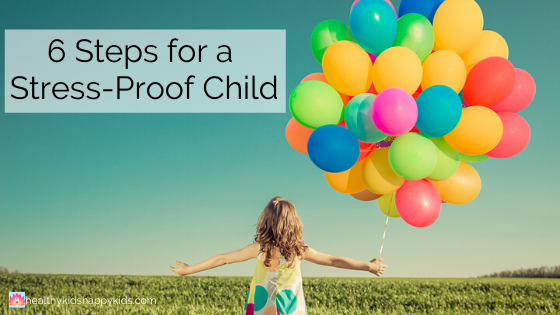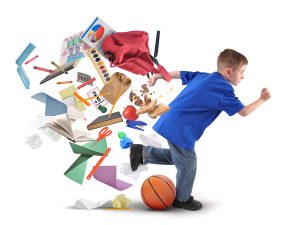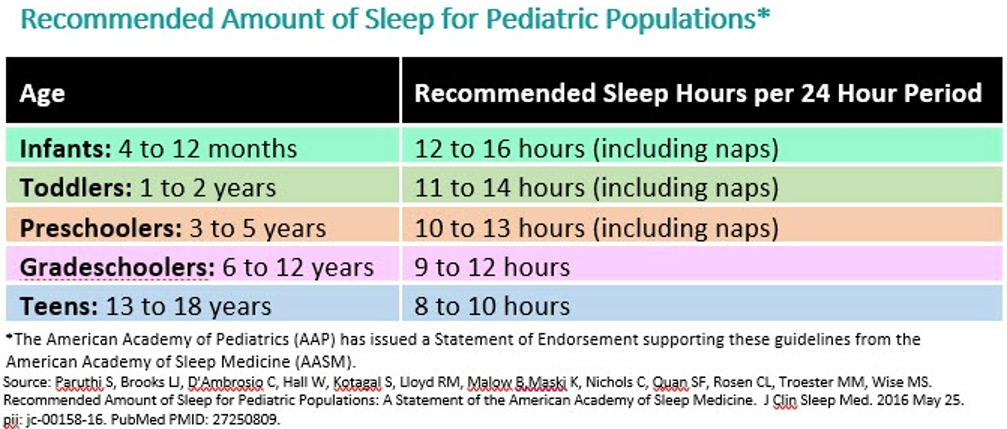
We are facing an epidemic of anxiety and depression in our children and teenagers. 1 in 4 teenagers has been diagnosed with an anxiety disorder. By the time they’re 18, nearly 1 in 2 teens will be diagnosed with a mental health disorder. And many are turning to a poly-pharmacy of psychiatric medications without the relief that they so desperately need.
Are kids stressed?
YES!

Are parents stressed?
YES!

Do we, and our children, have the tools we need to manage this stress productively and effectively?
NO!!!
Stress – a double-edged sword
Is all stress “bad?”
Not necessarily. Stress can be ADAPTIVE and PROTECTIVE. Acute stress gets us out of danger. Acute stress helps us to get stuff done. There’s nothing like a deadline to whip you into high gear and get your homework or project done!
When we manage and overcome acute stress, our mind and body learn how to manage future stressors in a healthy and optimal way. We develop a cellular memory of HOW to manage stress, and confidence that we CAN manage stress.
THIS is what we want for our children!
Sympathetic vs. Parasympathetic Nervous Systems
Let’s take a moment to discuss our Sympathetic vs. Parasympathetic Nervous Systems.
Stress activates our Sympathetic Nervous System – our “Fight-Flight-Freeze” response. Our body gets ready to deal with imminent danger – our pupils dilate so we can see the threat more clearly, our heart rate increases to get blood pumping to wherever it’s needed, our lungs open up, and our muscles contract getting ready to run, or stay and put up our best fight. We’re ready to face that proverbial saber-toothed tiger!
Stress slows down our Parasympathetic Nervous System – our “Rest-Digest-Heal” response. Who has time to stop and eat a sandwich or take a nap when we’re running from that saber-toothed tiger? But eventually we need this response to kick in, once the threat is gone. The Parasympathetic Nervous System calms and restores the heart and mind, and repairs the insult caused by stress. It supports our LONG-TERM health, well-being and resilience so we (and our kids) can thrive – body, mind, and spirit.
What happens when our bodies and our minds view homework, soccer practice, friend drama, social media, our parents fighting, not enough sleep, not enough exercise, and our Standard American Diet with too much sugar and processed foods as the saber-toothed tiger?
Only this time, the saber-toothed tiger never goes away, and our bodies and our minds never stop running.

A problem arises when stress becomes chronic …
Psychological stress is as much of a driver of inflammation and chronic disease as physiologic stress. The “Cell Danger Response,” as described by Dr. Robert Naviaux, is our cellular response to stress that underlies all chronic health conditions. It’s a primitive response to protect our cells from injury that can be triggered by physical AND psychological insults. These toxic insults include infection, mold/mycotoxins, heavy metals, glyphosate (Roundup), artificial dyes/flavors/preservatives, and emotional STRESS! Our cells make no distinction between these stressors. Our brain, heart, gut, and immune system all interpret these stressors as: “Life is NOT good”
I’ll have much more to come on the Cell Danger Response in future blog posts, so hang tight! But for now, know that if our cells get stuck in the Cell Danger Response, regardless of the stressor, and cannot repair and heal, the end result is chronic inflammation.
Chronic Inflammation leads to Chronic Disease
What our children need are tools to deal with that saber-toothed tiger effectively and neutralize the threat, no matter what shape, size or form that tiger comes in. Unfortunately, our, and thereby our children’s, primary coping mechanism has become —> AVOIDANCE.
When we couple chronic stress with avoidance, that compounds chronic inflammation and our progression to chronic disease because our nervous system never learns how to get out of sympathetic overdrive, and our cells never learn how to heal from the Cell Danger Response.
What we need is a way to STRESS-PROOF kids.
Notice that I didn’t say have “STRESS-FREE” kids. Protecting and shielding our kids from stress, and teaching them that stress should be avoided, is NOT helping them manage and overcome stress in a healthy, positive and productive way.
I totally get it. When you see your kid stressed and crying, Mama Bear comes out in full force and you just want your kids to be happy. You want to take their pain and stress away. It tears at my heart to see Bodi and Kenzi worried, sad, anxious, and stressed. And it takes all my will not to make it right “for them.” But it gives me fortitude knowing that when they can learn to make it right “for themselves,” they will gain the tools to be healthy, happy, and thriving for the rest of their lives, no matter what curve-balls are thrown their way.
So how do you help your children engage their hearts and minds and activate their parasympathetic nervous systems? Get out of chronic Fight-Flight-Freeze and into Rest-Digest-Heal? These 6 simple steps will get you and your child on your way…
6 Steps for a Stress-Proof Child
Step 1: Slow Down …

How many of you have bitten off more than you can chew?
How many of you are over-scheduled?
How many of your kids are over-scheduled?
Do you get a headache looking at your family calendar, trying to figure out who’s going to pick the kids up from school and take one of them to soccer practice and then to piano lessons, and the other one to ballet rehearsal and then to their math tutor, and then find time to go grocery shopping, get dinner on the table by 6pm, get them to bed by 8:00pm, and then your work REALLY begins???
Do you know how to say “NO!”?
How can we expect our kids to know how to prioritize their time and themselves and learn to say “No!” if we can’t do it ourselves? Model how to SLOW down. Unschedule … let go of unnecessary commitments.
Step 2: Breathe …

We all know how to breathe, right? But do we all know how to breathe the “right” way?
“Belly breathing” is one of the best ways to activate our Parasympathetic Nervous System.
What is “belly breathing?” Belly breathing is also called diaphragmatic breathing. It helps to understand the actual mechanics of breathing. Your diaphragm is the main breathing muscle that sits underneath your lungs and separates your chest from your abdomen. When you inhale, your diaphragm moves downward, causing your belly to expand and creating more space for your lungs to fill up completely with air. When you exhale, your diaphragm moves upward, driving air out of our lungs while your belly flattens.
Babies belly breathe naturally. But somewhere along the way, we started to “suck in our gut” and breathe with our shoulders, and forgot this simple tool to activate our parasympathetic nervous system. Take a moment right now to notice how you’re breathing – are you shoulders moving up and down with every breath, or are they staying still and allowing your belly to fully expand with nourishing breath?
Here are some simple guidelines to teach you and your child to belly breathe. Practice together – it’s a great way to start your day, and an awesome way to end your day as you snuggle and drift off to sleep.
- Sit or lie comfortably.
- Place one hand on your chest.
- Place the other hand on your belly.
- Pretend there’s a balloon in your belly that you need to inflate with every deep breath in, and deflate fully with every exhale out.
- Breathe in through your nose and fill that balloon to the count of 3, noticing the hand on your belly rise, and the hand on your chest staying still. Hold that inhale for just a moment.
- Breathe out through your mouth to the count of 3, feeling the hand on your belly sink all the way down, while the hand on your chest remains still.
Tell your kids that they can belly breathe anywhere, anytime they need to calm their minds and quiet their bodies.
Step 3: Shift Your Perception …

Our brains are wired to have a negativity bias. What does that mean?
It means that our brains hold on to and remember the negative things that happen much more easily than the good things. Rick Hanson, PhD, author of “Hardwiring Happiness” says that our brain is like Velcro for the bad, and Teflon for the good.
We all know this is true. You could be having the most amazing day where everything’s going just as planned, and then one single thing happens to throw a wrench in your plans and all of a sudden your day is ruined and it’s the Worst. Day. Ever. It takes just one negative moment to erase all the 100 positive moments that happened just before. Think about how much easier it is to dwell on the things that didn’t go right, criticize yourself for everything you did wrong, get annoyed at all the things that your kids or partner are still doing after the 100th time you’ve told them not to … instead of focusing on the things that went well, all the things that you did great, and all the times that your kids or partner actually DID do what you had asked them to do.
It’s not good or bad. It’s just how it is.
So remember this, and focus on being MINDFUL and FULLY PRESENT when positive things happen in your everyday life. Linger on the positive. When something good happens, spend 5, 10, 30, 60 seconds just sitting with that good feeling, thinking about all that is positive about that experience, and noticing how your body and brain feel in that moment.
Imagine re-framing each day in POSITIVITY and GRATITUDE …
Imagine teaching our kids a POSITIVITY BIAS to bring forward in their relationships to themselves, their friends, their partners, and to their communities …
The mind is a powerful tool for managing the effects of stress perception. How our mind PERCEIVES stress determines how stress affects our body and mind. So let’s help our brains, and our children’s brains, be Velcro for the good, and Teflon for the bad. Let go of the negative. Hold on to the positive – really hold on to it, until that moment becomes a part of your memory.
And for kids who still have trouble letting go of negativity, help them learn cognitive behavioral tools to get themselves out of that negativity loop. Dr. Dawn Huebner’s self-help book for kids, What do Do When You Grumble Too Much, is a must-read and staple in our home.
Step 4: Smile …

The power of a smile … 😊
Ever hear the phrase “Grin and bear it?”
Well, there may be some truth to that.
Did you know that it’s virtually impossible to stay angry, sad, annoyed, frustrated, negative, you name it – if you just smile. And I don’t mean any smile. I mean a “real” smile, a “true smile of happiness” or a Duchenne smile. You can spot a fake smile a mile away. You know that. It’s what we jokingly call our kids’ “constipated smile” when we ask them to pose for the camera.
But what exactly is a true smile of happiness? That smile that you can’t help but smile back at. It’s the smile that wrinkles up your eyes (yes – those beautiful “crow’s feet”) and turns up the corners of your mouth. A “real” smile triggers our happiness and motivation hormones – serotonin and dopamine. Your brain perceives that you’re happy. Your brain perceives that your task is not as difficult or as challenging as it is. Researchers gave 3 groups of students the same difficult and unpleasant task. They asked one group to smile the whole time, the other group to hold a chopstick between their teeth to produce a Duchenne smile, and the other group didn’t make any particular facial expression. The group that smiled perceived that the task was less difficult and more enjoyable – even though it was the same task. And guess what – the group that held chopsticks in their teeth to create a Duchenne smile, even though they weren’t told to actually smile, found the task less stressful than the group that didn’t smile.
A true smile helps your brain believe that stress, no matter how difficult and challenging, is more manageable. Stressing and getting anxious doesn’t make your task any easier or pleasant, so you might as well smile your way through it!
Step 5: Be Mindful …

If you haven’t already, hop on over and read my article on Mindfulness for Kids, where I go even more in depth on what mindfulness is, and why it’s so important to practice mindfulness with our kids.
Mindfulness can be practiced anywhere, anytime. Mindfulness is the simple (but not always easy) act of pausing to notice what is going on around you, and what your body and brain are experiencing in that moment.
An easy way to practice mindfulness with your children is to do something called a 5 Senses Mindfulness Exercise, or what I call Stop, Look & Listen.
Stop what you’re doing, even for just 1 moment. Look and really notice what’s happening around you with all of your 5 senses. Begin with your eyes closed. What do you hear? What do you feel on your skin? What do you smell? What do you taste? Now open your eyes and notice what you see – really look. What do you see that you hadn’t seen before? Listen to your body and mind and notice everything you’re experiencing and feeling in that moment.
Step 6: Stress-Proof Your Child’s Lifestyle …
An essential part of stress-proofing your child is teaching them the lifestyle factors that we need to prioritize in order to manage stress in a productive way. You wouldn’t send your child off to run a marathon in flip flops, would you? You would make sure they had the right sneakers, had eaten a hearty breakfast, and had a good night’s sleep the night before. Life is a marathon – there are no shortcuts or sprints. Sleep, exercise, and nutrition are non-negotiable foundations for a stress-proof life, and need to be made higher priorities, and at the very least equal to any supplement or medication that may be recommended. You’re not going to get very far in flip flops …
Sleep …

We repair, detoxify, grow, and learn in our sleep! Our brain is as metabolically active, if not more, when we’re asleep as when we’re awake. During REM sleep, the limbic system in our brain, which is responsible for processing emotions and motivation, is very active. Sleep is critical for our brain to process recent emotional experiences. Sleep even affects how emotionally reactive we are the next day! Remember how much more impatient and irritable you were trying to get your kids out the door to school on time when you didn’t get enough sleep the night before?
Most of us, including our children, are chronically sleep-deprived. We must make sleep a priority. Take a look at the recommended number of hours of sleep by age from the American Academy of Pediatrics – these are hours ASLEEP, not just hours in bed! So think about what time your kids wake up, count backwards to what time they should be asleep, and then start the bedtime routine at least a half-hour before that!

Exercise …

Exercise is essential for a healthy body and mind. Exercise has been found to support mood and brain function BETTER than Prozac! Exercise in NATURE provides the biggest benefit. Not only does exercise support healthy mood, it supports optimal attention/focus, immune functioning, and detoxification. Playing a sport was found to be one of the most protective factors against teenage anxiety and suicidality. And for us grownups, exercise has been found to literally reverse cellular aging! The health benefits are just too many to count! So make it a family affair – get out and move your body, everyday, whether it’s a bike ride in the hills or a dance party after dinner!
Nourish the Gut-Brain Connection …

ALL HEALTH STARTS IN THE GUT. The more we learn about the gut-brain connection, the more we learn about how the bugs in our gut affect how our brain thinks and feels, and how our brain thinks and feels affects the bugs in our gut! Our gut microbiota makes up at least 80% of the neurotransmitters in our body, including Serotonin – our feel-good hormone that helps manage worries, be happy, reduce depression and help us sleep (it’s the precursor to our sleep hormone, melatonin), and Dopamine – our reward hormone that keeps us motivated and helps us to pay attention and focus on what needs to get done. Probiotics support our gut health, immune system, nervous system, detoxification, and SO much more!
Healthy Gut = Healthy Brain
Nourishing your child’s gut will nourish their brain, and help support a stress-proof life. Follow these principles for your whole family, and you’ll be well on your way to a healthy, happy future!
- Eat a rainbow of fruits and vegetables.
- Eat healthy fats, omega-3 essential fatty acids
- Eat wild organic meat and low-mercury fish
- Avoid artificial colors, flavors and preservatives
- Get plenty of sunshine and Vitamin D
- Eat fermented foods or take a probiotic supplement
(If you want to know my guidelines for choosing your child’s probiotic, you can download my Free Guide here: How to Choose Your Child’s Probiotic)
So there you have it – my 6 Steps for a Stress-Proof Child! Life’s not always easy, but follow these steps to teach your children the tools to navigate through life’s ups and downs, twists and turns, for a healthier happier life, come what may!
xo Elisa
Love this…working on my manifesto right now #1 is smile…..
Absolutely! Smiling and laughter are truly the best medicine! 🙂
Thank you thank you Dr. Song. I am a 72 year old grandma of two lovely boys. I have been in the area of Chinese medicine for over 25 years so all the information you are providing really resonates. Now more than ever new moms and the younger generation of moms desperately need to hear this information.
How can children not be stressed when they spend 10 hrs. A day away from home in constant commotion,(5/6 yrs old) no down time and let’s not even get to the nutrition part. Including school lunches and snacks.
Children aren’t sleeping, no focus, and lots of acting out. You have just mapped out why. Stressed parents equal stressed kids. Please parents, stop the rat race and listen to your children behavior, so you can understand what’s going on in their lives.
Thank you again Dr. Song.
You have 2 very lucky grandsons! 🙂
Thank you for this! I appreciate having sound advice from a Pediatrician who is also a mom. Your advice has helped me in so many ways and I’ve shared it with others because of this!
thank you so much, Ellen! This means so much to me! xo
I love reading what you have to say. Your intention always feels so kind and thoughtful. I also have the pleasure of strongly resonating with your perspective. ❤️